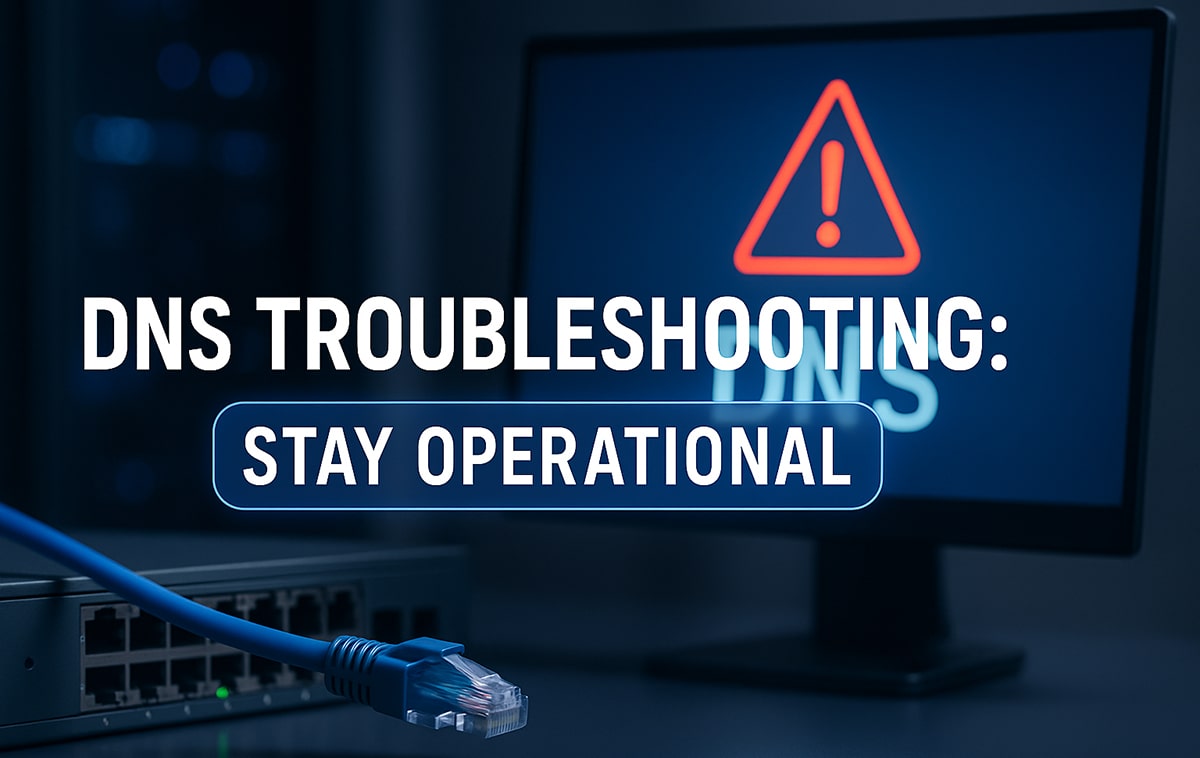No products in the cart.

DNS Problems: A Hidden Threat Behind Major Service Outages
DNS problems are one of the most common causes of sudden website outages, email delivery failures, slow-loading applications, and service disruptions. When DNS stops resolving properly, every digital service attached to the domain starts malfunctioning at the same time. Websites refuse to load, customer portals become inaccessible, login systems break, and transactional emails start bouncing. This often leads to panic because everything appears to be failing at once, but the root cause almost always lies in a DNS-related issue.
What Causes DNS Propagation Errors?
DNS propagation errors happen when changes to DNS records haven’t yet updated across global name servers. Each ISP caches DNS records for a specific time based on TTL values. Until the cached record expires, end-users may see the old IP, resulting in some users opening the updated site while others still land on the previous server.
This creates confusion, especially after migrations, DNS record updates, or new hosting setups. Lowering the TTL before making changes and monitoring name server updates using reliable tools helps ensure faster propagation.
How Incorrect MX Records Disrupt Email Delivery
Email disruption commonly comes from incorrect MX records. A minor typo, prioritization mismatch, or pointing MX to the wrong hostname breaks the entire mail flow. Emails may bounce back, land in spam filters, or fail silently without reaching inboxes.
Ensuring that MX records point to a valid mail server with the correct priority, SPF, DKIM, and DMARC alignment is important for stable email delivery. Even a small correction in DNS can instantly recover an entire email system.
Name Server Misconfigurations Can Cause Domain Outages
Some domains experience downtime due to misconfigured name servers. If the registered domain uses incorrect or old name servers, or if a name server has gone offline, the domain becomes unreachable.
This issue becomes more noticeable during server migration, hosting provider changes, or data center movement. A quick verification of name server health, SOA consistency, and DNS zone accuracy can prevent hours of downtime.
Why TTL Settings Matter for DNS Reliability
High TTL values also cause delays during critical updates. When TTL is very high, ISPs cache DNS records longer, making it harder to propagate new information quickly.
Reducing TTL before any major change allows new records to reach users faster, improving reliability. Once changes stabilize, TTL can be increased again to enhance caching performance.
How DNS Cache Issues Lead to Inconsistent User Experiences
DNS caching issues at browser, device, or network level also lead to inconsistent loading experiences. Users may still see outdated versions of the site unless they clear cache or wait for the system to refresh.
Using managed DNS services with active failover, global load balancing, and automated health checks significantly reduces these inconsistencies.
The Importance of Ongoing DNS Monitoring and Support
A stable DNS setup requires continuous monitoring. Proactive DNS monitoring, web hosting support, around-the-clock technical support, server management services, and cloud infrastructure support help detect anomalies before they develop into major outages.
Regular checks on zone files, resolver performance, mail routing, and domain health ensure that business-critical applications remain stable, accessible, and secure.
DNS Stability: The Backbone of Digital Uptime
Keeping DNS stable isn’t just a technical requirement – it is the backbone of uptime, performance, and seamless digital operations. Whether it’s a new deployment, migration, security upgrade, or email configuration, the reliability of DNS handling decides how smooth the user experience will be.
DNS problems will always occur, but with the right approach and expert guidance, every issue can be diagnosed, fixed, and prevented with minimal downtime.
FAQ
- What are common DNS problems?
DNS propagation delays, incorrect MX records, outdated caches, misconfigured name servers, and DNS outages are the most frequent issues.
- How do DNS issues affect business operations?
They can take down websites, break logins, delay emails, and disrupt apps — leading to lost revenue and poor user experience.
- How fast can DNS problems be fixed?
Many DNS fixes apply instantly, but propagation across global name servers may take minutes to 48 hours depending on TTL values.
- How can I prevent DNS-related downtime?
Use managed DNS services, monitor records continuously, reduce TTL before changes, and verify configurations regularly.
Conclusion
DNS issues may seem complex, but the truth is that most problems originate from just a few core areas: misconfigured records, outdated name servers, high TTL values, email routing errors, and propagation delays. When these issues are not monitored closely, even the smallest mistake can cause website downtime, email failure, and serious disruption to business operations. Understanding how DNS works behind the scenes, how global propagation behaves, and how caching influences loading behaviour helps reduce panic and allows faster and more effective troubleshooting.
Maintaining strong DNS stability is not a one-time task but an ongoing responsibility. Regular DNS monitoring, precise DNS zone management, proactive email configuration checks, and dependable 24/7 support ensure that websites, applications, and mail services stay reliable and accessible at all times. With the right combination of technical accuracy, continuous oversight, and professional support, DNS problems can be detected early, fixed efficiently, and prevented altogether. A well-managed DNS environment becomes the foundation for uptime, speed, security, and seamless user experience across every digital service your business depends on.


